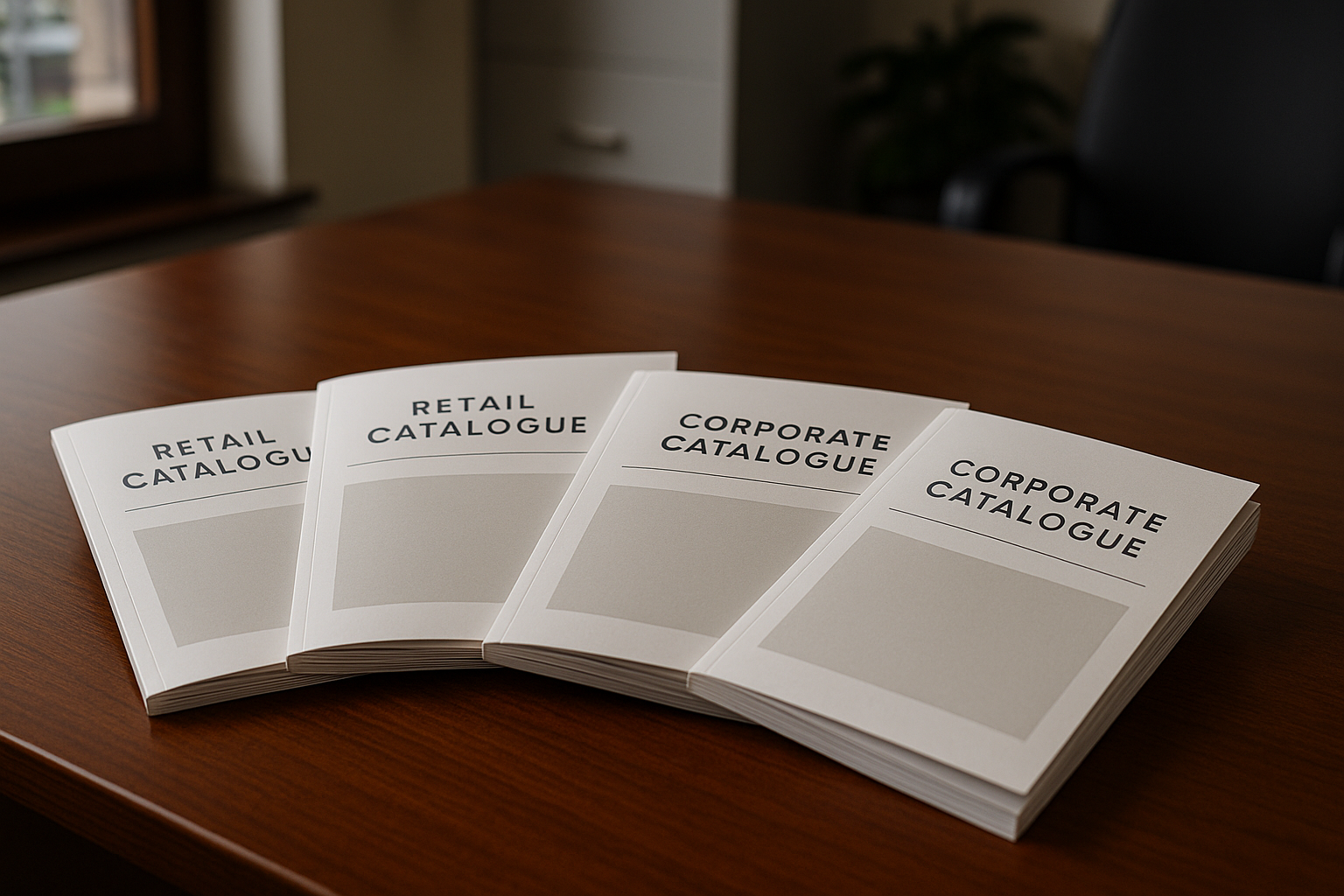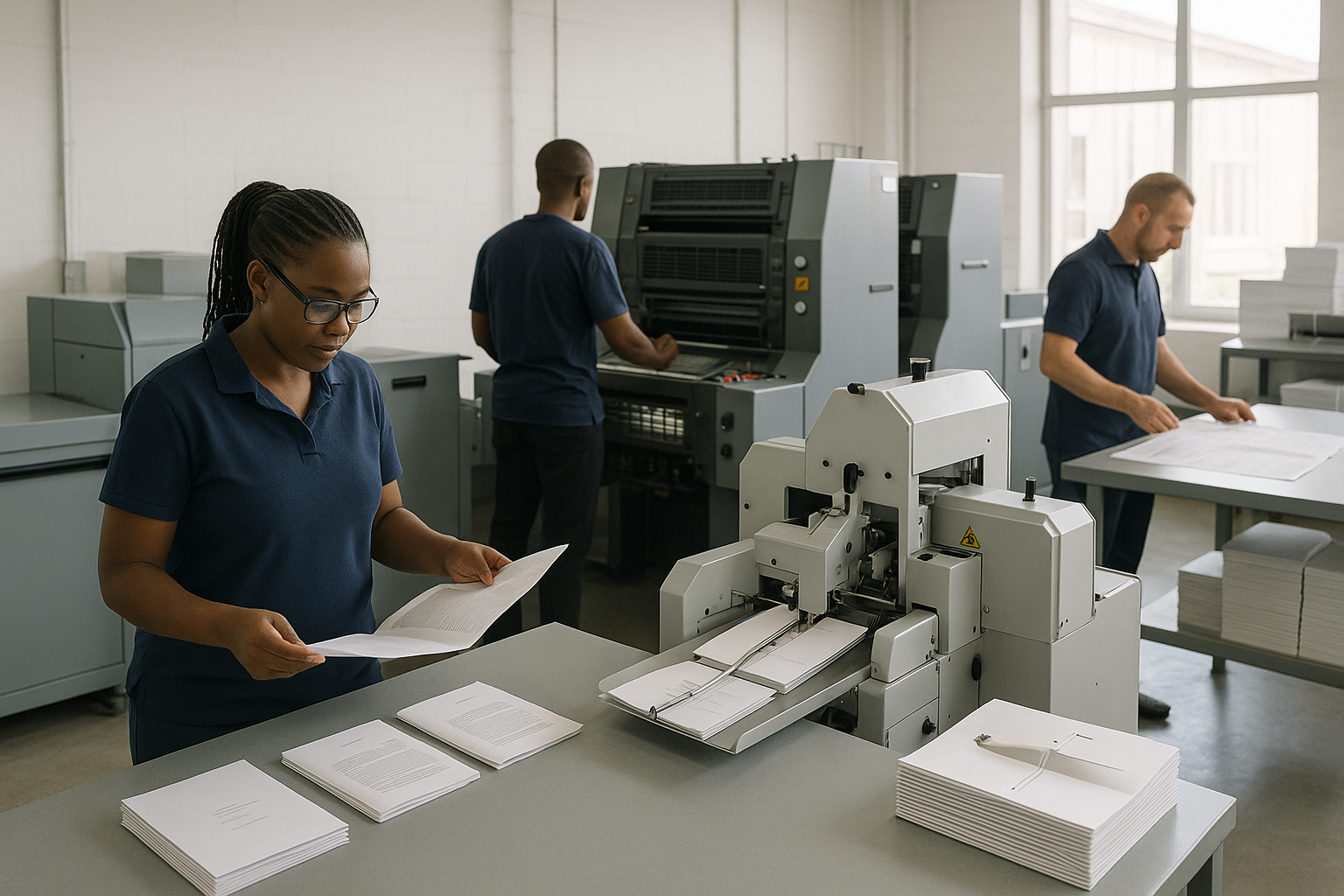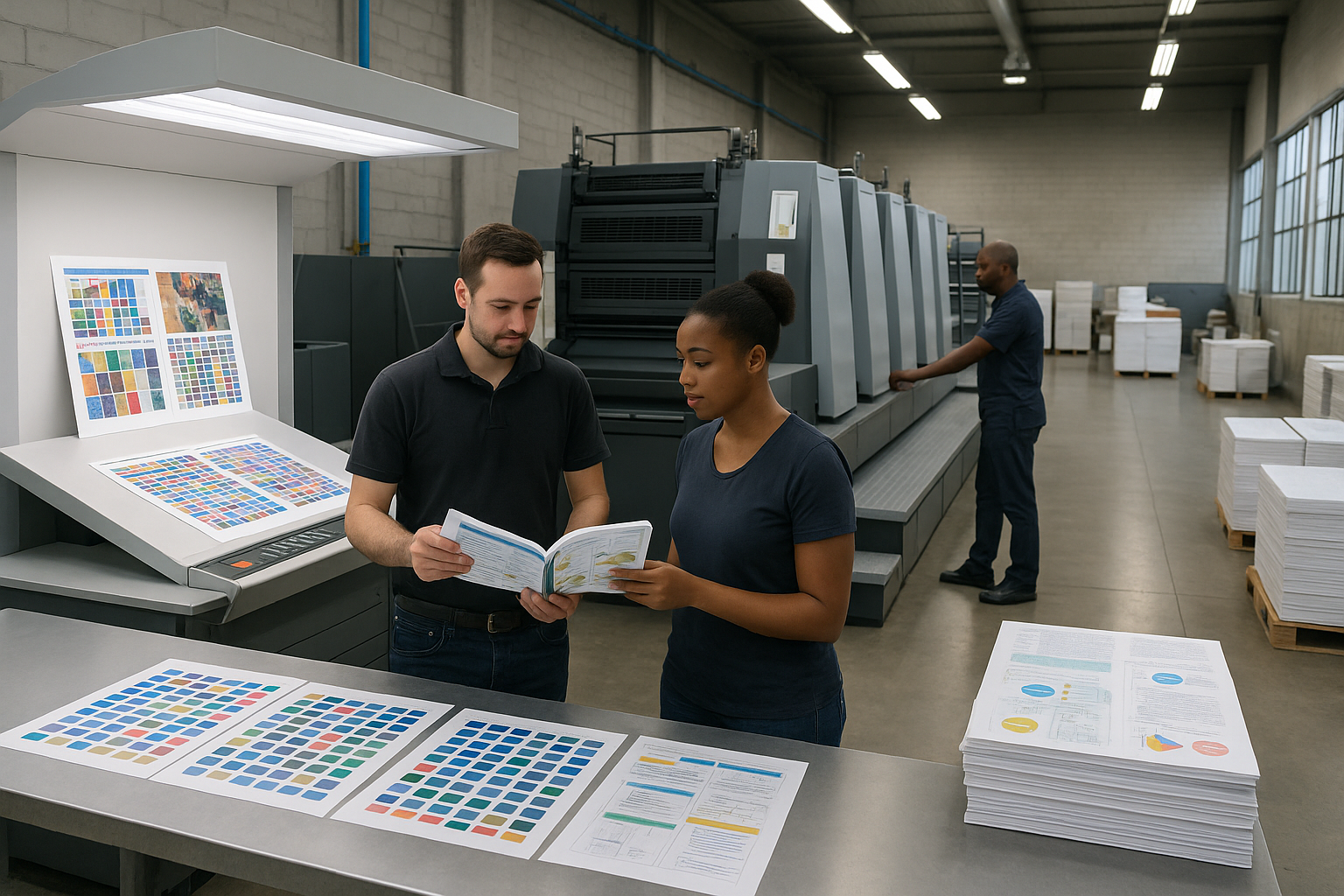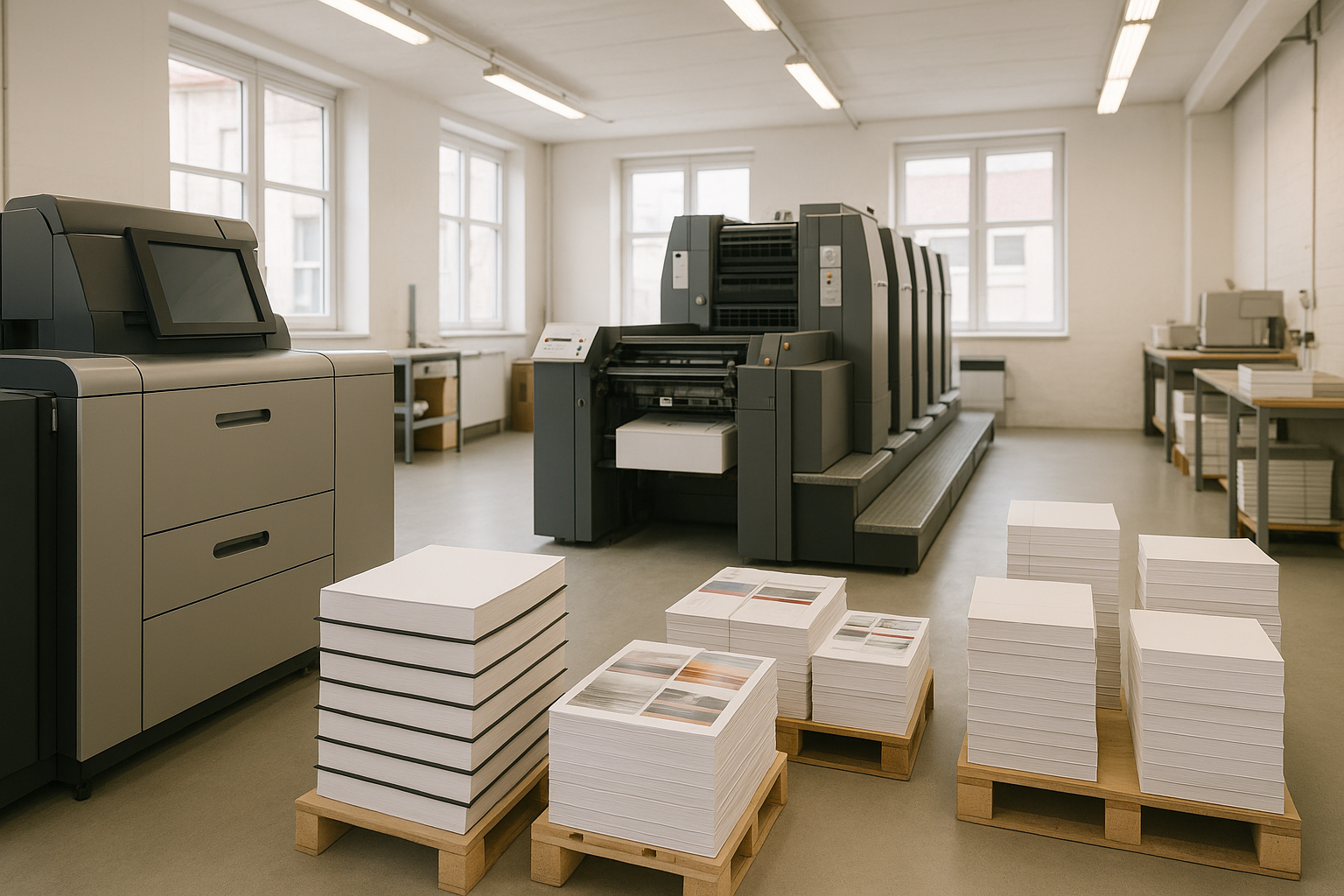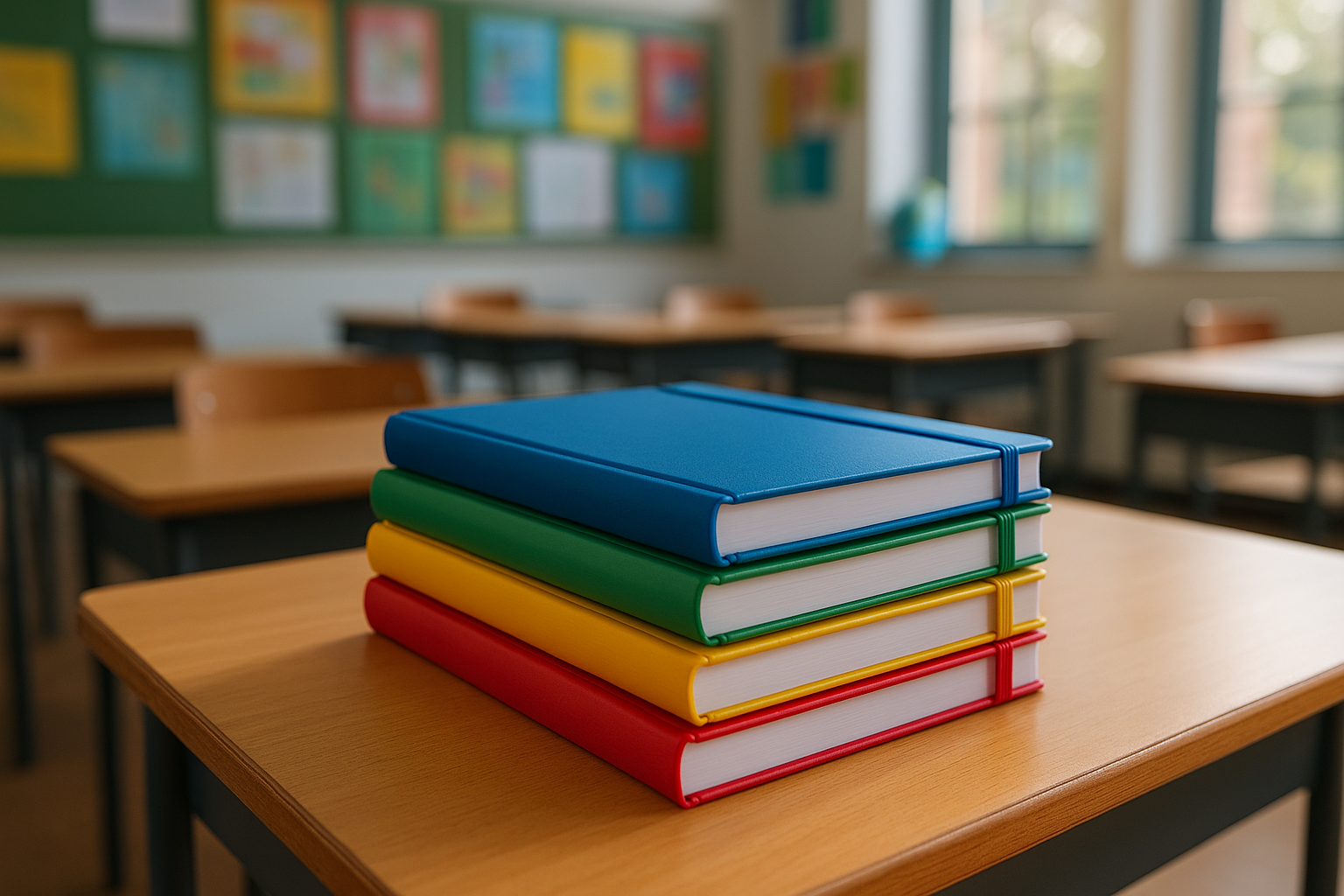Textbook printing services and design are the backbone of effective classroom resources — from layout and cover durability to print runs, binding and delivery across South Africa. Whether you’re a school, publisher, NGO or small business creating training manuals, the right combination of print strategy and design determines whether students actually use your material.
What are the core components of textbook printing services and design?
Textbook printing services and design combine editorial preparation, page layout, choice of paper and ink, binding, finishing and distribution. Design is not just aesthetics: it covers typography for readability, chapter structure, visual hierarchy, and learner-centred assets like callouts, exercises and metadata. Printing includes a decision between litho and digital printing, short-run print-on-demand or large bulk educational printing for schools.
In practice, core components include:
- Prepress: proofing, pagination, colour management.
- Print method: litho for large runs, digital for short runs or on-demand.
- Paper and coatings: coated vs uncoated, opacity, wet strength for heavy handling.
- Binding: perfect binding, sewn binding, spiral for workbooks.
- Finishes: matt or gloss lamination, varnish, rounded corners, foil for covers.
- Distribution: logistics and delivery across South Africa and beyond.
For local services, many publishers choose commercial printing partners experienced in school textbook printing and catalogue printing to coordinate schedules around school term preparation.
Textbook printing services and design: how do I choose between digital and litho printing?
Deciding between litho and digital printing depends on run size, budget, turnaround and desired finishes. Litho (offset) printing delivers excellent colour consistency and lower unit costs for large bulk educational printing runs; digital printing excels at fast turnaround, variable data and low minimums.
Compare the two in this quick table:
| Factor | Litho (Offset) | Digital |
| Best for | Large print runs (hundreds to thousands) | Short runs, proofs, print-on-demand |
| Unit cost | Lower at scale | Higher per unit but no setup costs |
| Turnaround | Longer setup, predictable for big runs | Fast, same-day or 3 to 5 working days |
| Customisation | Limited per unit | Variable data / personalised pages |
According to Statista, demand for digital and on-demand printing increased as publishers moved toward flexible short runs and personalised materials, making digital a strategic tool for training manuals and supplemental booklets.
How can design improve usability and learning outcomes?
Design choices directly affect comprehension. Good textbook design uses consistent typography, clear headings, accessible contrast, and visual aids such as tables, charts and illustrations to support different learning styles. Layout decisions like line length, margin size and spacing influence readability for long study sessions.
Practical design recommendations:
- Use serif fonts for body text in printed books and sans-serif for captions and headings to create hierarchy.
- Apply consistent colour coding for subjects or units, and ensure contrast meets accessibility standards.
- Design exercises with ample margin space for student annotations or include detachable worksheets as part of booklet printing.
According to UNESCO, access to quality textbooks is one of the strongest school-level predictors of learning outcomes, so thoughtful design amplifies the educational impact of each printed copy.
What binding and finishing options are best for school textbooks and workbooks?
Binding and finishing determine durability and handling. For core textbooks used by multiple cohorts, sewn binding is preferred because it lays flat and survives heavy use. Perfect binding is common for trade-style textbooks; spiral or comb binding suits workbooks and teacher guides where flat opening and page removal are useful.
Finishing options to consider:
- Lamination (matt or gloss) protects covers against scuffs and moisture.
- Spot UV or soft-touch coatings add durability and premium feel.
- Heavy weight, high-opacity paper for textbooks reduces show-through from ink on the following page.
If you need cost-effective short-run supplementary materials, booklet printing and brochure printing services can produce durable supplemental kits and promotional materials for events and parent communications.
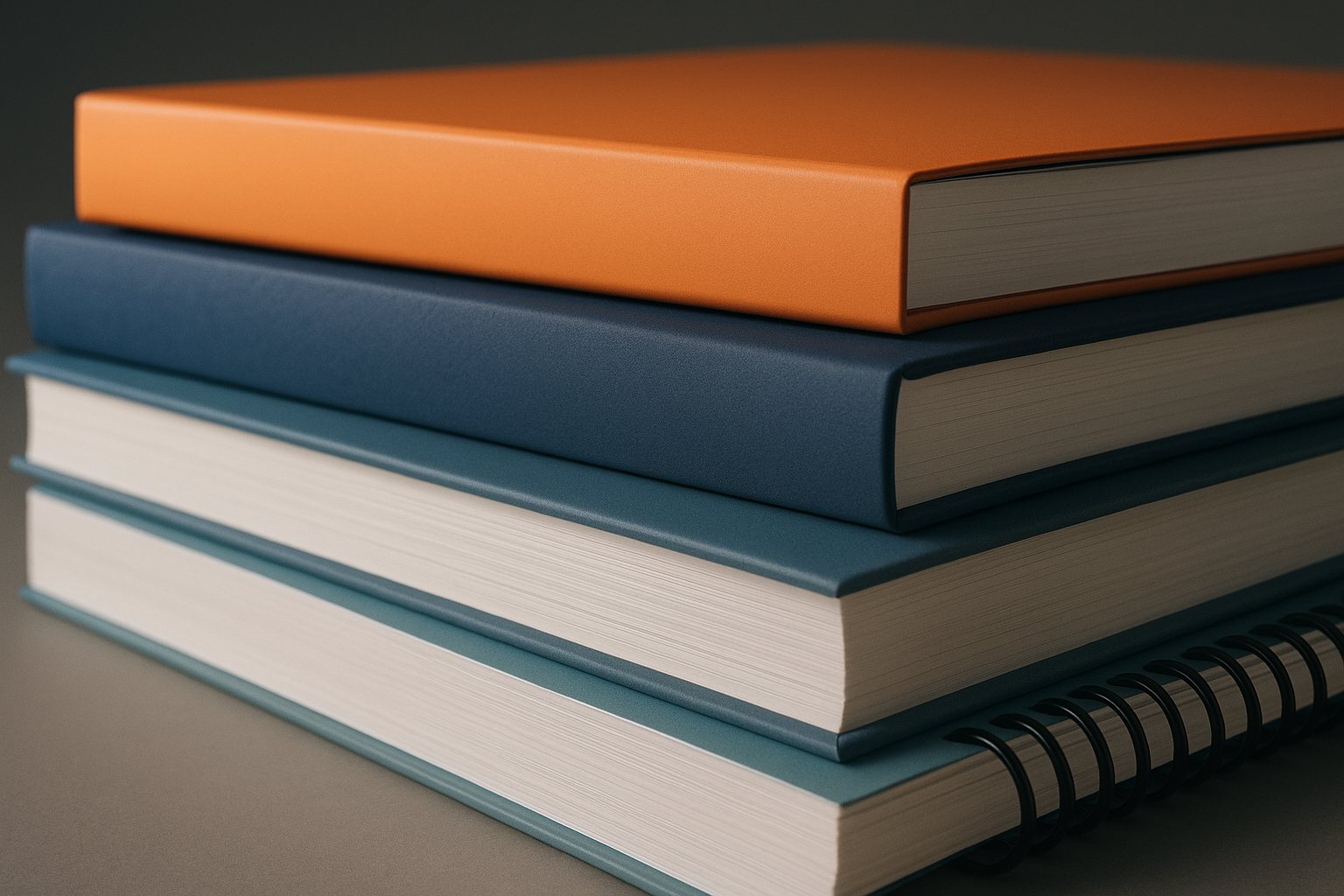
How do turnaround time and logistics affect school term preparation in South Africa?
Timing is critical: textbook cycles normally align with academic terms and procurement windows. Fast turnaround printing and reliable delivery across South Africa are essential to meet school term preparation deadlines. Printers offering print-on-demand and local distribution hubs reduce lead times and storage costs for publishers and schools.
Checklist for scheduling:
- Finalize content and proofs at least 6–10 weeks before term starts for large runs.
- Allow 1–2 weeks for digital short runs or reprints.
- Plan logistics: regionalised deliveries, school clusters, and warehouse staging help speed distribution.
According to the South African Department of Basic Education, improving textbook procurement and distribution is a priority to ensure learners receive materials on time, which makes selecting a printing partner with national delivery networks critical.
What are cost-effective strategies for bulk educational printing?
Cost-effective bulk educational printing balances unit cost, quality and storage. Consolidating print volumes into a few large litho runs lowers per-unit costs but increases inventory holding. Alternatives include staggered print runs and print-on-demand to reduce warehousing while ensuring availability.
Strategies to reduce costs without sacrificing quality:
- Standardise trim sizes and paper stocks across series to lower setup variability.
- Choose uncoated interiors to save cost when image quality is less critical.
- Negotiate run-based pricing and include contingency reprints in the contract.
Many South African schools and publishers choose mixed strategies: a primary litho run for core textbooks supplemented by digital short runs for revisions, errata or last-minute demand spikes.
How does eco-friendly printing fit into textbook production?
Eco-friendly printing reduces environmental impact through recycled or FSC-certified papers, eco inks, and energy-efficient processes. For educational materials, selecting sustainable options also supports corporate social responsibility and can appeal to funders and NGOs.
Green practices to consider:
- Use FSC or PEFC certified paper stocks for traceable forestry practices.
- Choose eco inks to reduce VOC emissions and improve recyclability.
- Opt for water-based varnishes and avoid excessive laminates when possible.
Many printers in the commercial printing and educational printing sectors now offer eco-certifications and transparent reporting on carbon and waste — an important consideration if your institution must adhere to green procurement policies.
How can small publishers and NGOs use print-on-demand and custom publishing to scale?
Print-on-demand (POD) and custom publishing let small organisations produce professional textbooks and training manuals with low upfront costs. POD is ideal for pilot editions, translations, regional variants or materials that require frequent updates, such as curriculum changes or teacher guides.
Advantages of POD and custom publishing:
- No large inventory outlay — print what you need, when you need it.
- Rapid iteration to update content between terms.
- Option to personalise materials for specific learner groups using variable data printing.
If you are producing course packs, training manuals or business-to-school promotional kits, pairing POD with strategic booklet printing and catalogue printing supports flexible distribution while keeping costs predictable. See practical examples at our books printing and training-manual-printing pages for workflows and minimums.
What quality control and proofing steps should I require from a printer?
Quality control prevents costly reprints. Ask for digital and press proofs, colour swatches, and a preflight checklist covering font embedding, image resolution, and trim safety. For large-volume school textbook printing, confirm the printer’s colour management system and the availability of contract proofs or hard-copy colour proofs to sign off before full production.
Quality checklist to include in your contract:
- Preflight report confirming fonts, bleeds and image DPI.
- Soft proof (PDF) and one-to-one colour proof for covers.
- Sample binding and final trimmed sample for sign-off.
- Inspection and sampling regime during production for bulk runs.
Working with a printer experienced in school and commercial printing ensures they understand tolerances for educational materials and can manage prepress, press checks and post-press finishing to your specifications.
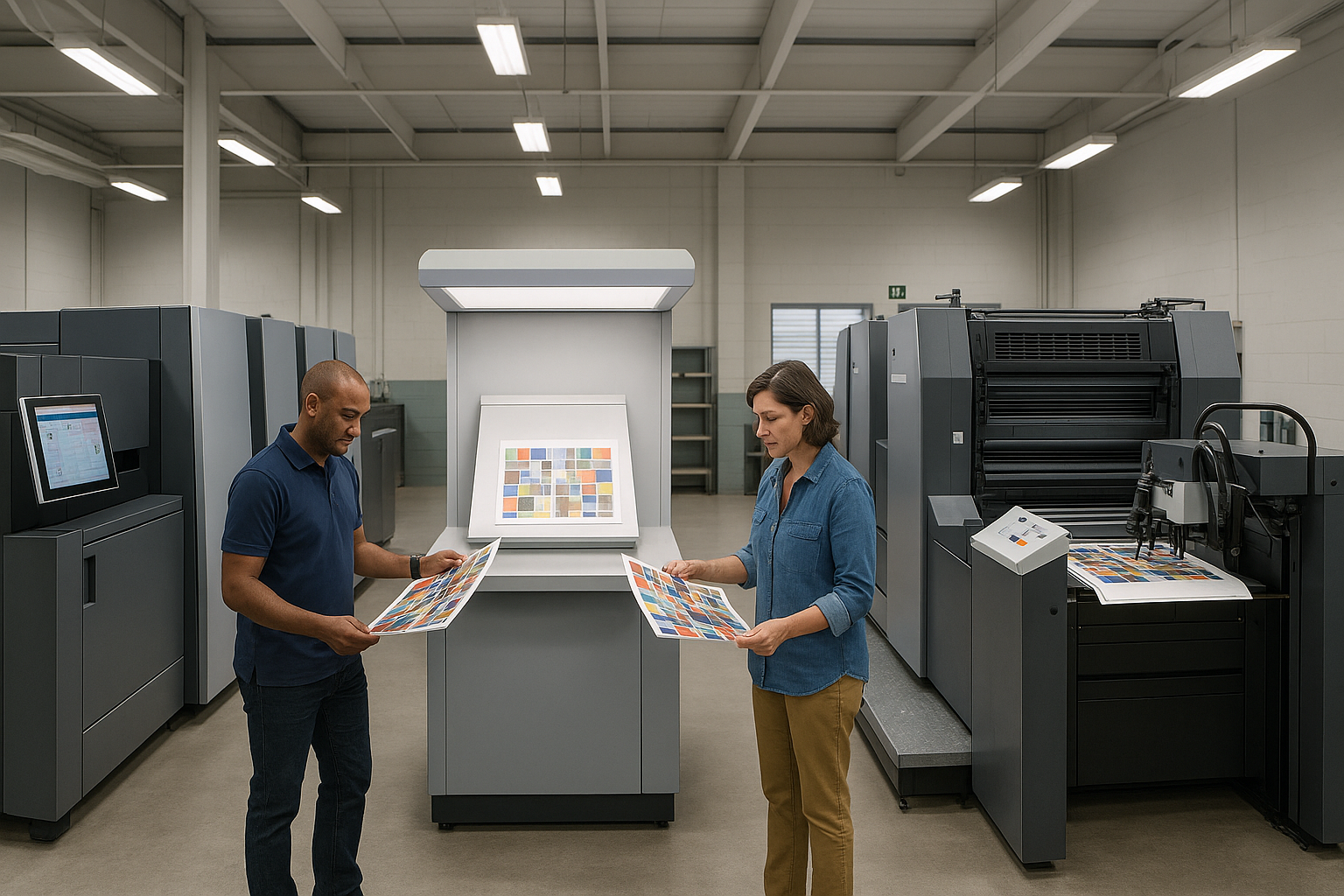
How can I integrate printed textbooks with digital resources and assessments?
Printed textbooks remain central in many classrooms, but integrating them with digital resources improves engagement and assessment delivery. Use QR codes or short URLs in printed materials to link students to downloadable worksheets, video demonstrations, interactive quizzes or teacher resource portals.
Integration strategies:
- Include QR codes that link to audio versions, supplementary videos or interactive tasks.
- Design teacher editions with annotated margins and links to downloadable answer sets.
- Offer hybrid bundles: printed textbook + access code for a digital portal or LMS resources.
Combine booklet printing for quick reference guides with brochure-style communications for parent and community engagement. For more extensive print-plus-digital projects, coordinate file formats and access codes during the design phase so printing can include unique identifiers where needed.
Which services should I expect from a textbook printing partner in South Africa?
A reliable South African printing partner should offer comprehensive services from design consultancy to national distribution. Core services include editorial support, layout and typesetting, litho and digital print capabilities, custom finishes, eco-friendly options, and logistics for delivery across provinces.
Questions to ask potential partners:
- Do they handle bulk educational printing and print-on-demand?
- Can they provide case studies for school textbook printing and booklet printing?
- What are their lead times and delivery networks across South Africa?
- Do they offer finishing options suitable for durable student use?
For publishers and institutions in South Africa, partnering with a full-service provider that understands curriculum cycles and can coordinate print and distribution will reduce risk and ensure materials are available when classes begin. Explore examples of education-focused services such as our textbook printing and education printing pages to assess capabilities and timelines.
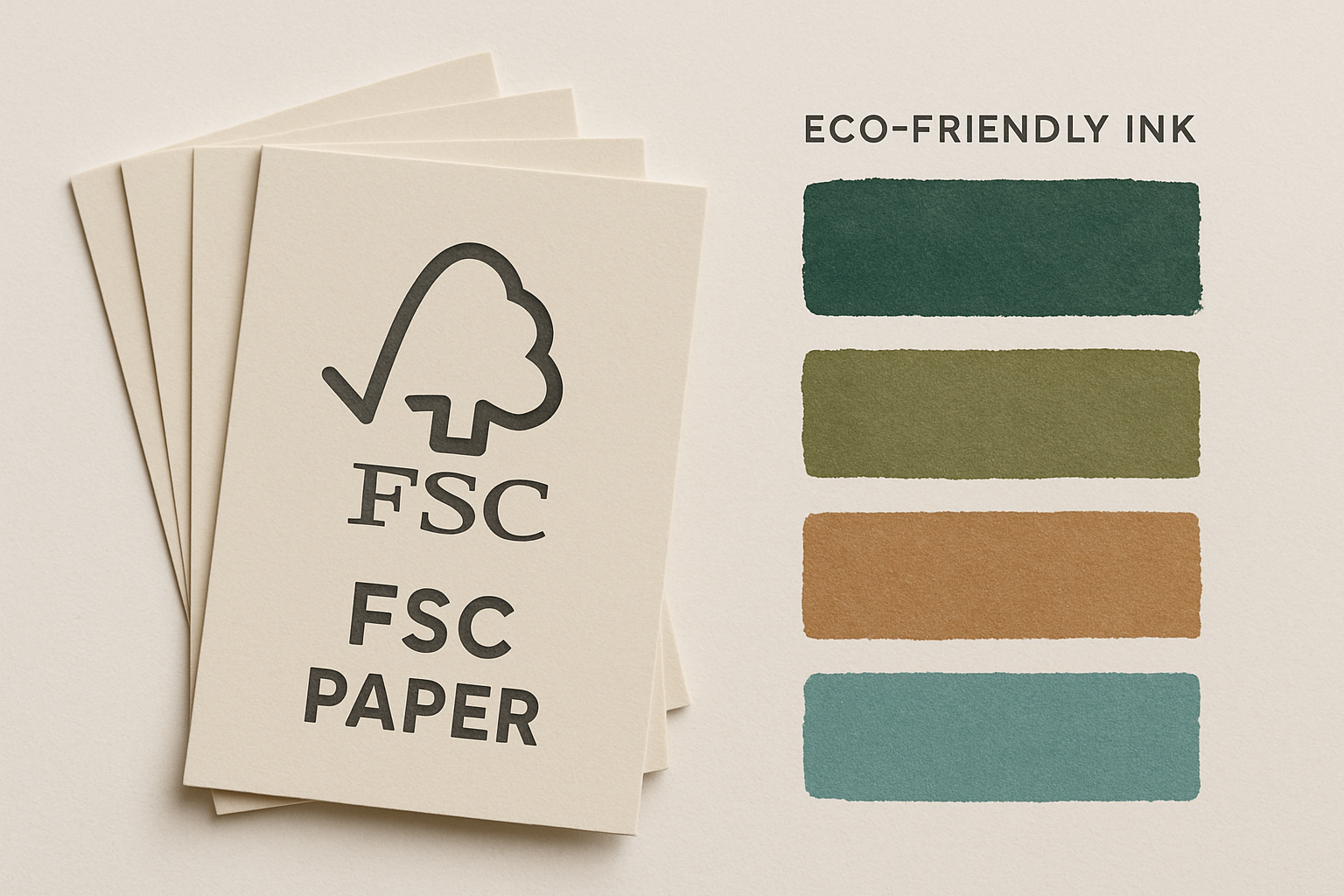
How much should I budget for a textbook project and what are common cost drivers?
Budgeting depends on print run, paper and binding choices, design complexity and distribution logistics. Key cost drivers include interior page count, colour coverage, premium paper or laminates, and whether the run is litho or digital. Shipping and warehousing across South Africa add to costs for bulk orders, while multiple small runs increase per-unit pricing.
To estimate costs, gather these variables:
- Final page count and trim size.
- Colour pages vs black-and-white interior ratio.
- Binding preference (sewn, perfect, spiral).
- Run size and delivery locations.
Many publishers mitigate cost by standardising specs across titles and consolidating orders for the same paper stock. If you are producing supporting brochures or course booklets, combine those with your main order to leverage economies of scale — see examples at our booklet printing and brochure-printing-services pages.
What are practical next steps to start a textbook printing project?
Begin with a clear scope and timeline: define the content, final page count, preferred trim size, binding type and target delivery dates. Create a realistic budget and ask potential printers for a preflight checklist and sample proofs. Prototype one chapter as a printed sample to validate typography, image colour and binding before approving a full run.
Suggested project steps:
- Confirm editorial content and obtain ISBNs if required.
- Develop a design brief outlining pedagogy, target reader age and accessibility needs.
- Request quotes for litho and digital options and discuss eco-friendly alternatives.
- Approve press proofs and schedule production to align with school term calendars.
As you plan, consider bringing in specialised services such as custom publishing for multi-language editions or combining printed books with digital assets. For inspiration on book production workflows, see the broader context of book design and textbook history on Wikipedia: Textbook (Wikipedia).
Summary: How to ensure your textbooks get used
Textbook printing services and design succeed when they prioritise readability, durability, and timely delivery. Align print methods to run size, choose finishes that withstand classroom wear, and integrate digital resources to boost engagement. For South African schools and publishers, contractual clarity, a quality control checklist, and a partner with logistics reach make school term preparation predictable and stress-free.
For reliable results, partner with Print It ZA — South Africa’s leading textbook printing and education printing specialist. With expertise in bulk educational printing, custom textbook design, and nationwide delivery, Print It ZA ensures every order is accurate, durable, and delivered on time. By combining smart design, advanced print technology, and flexible distribution approaches like print-on-demand, Print It ZA helps ensure your materials are accessible, engaging, and actually used by students.
Contact Print It ZA today for a Free Quote and Speedy Service.
Contact Print It ZA today, we deliver Printing Best!



